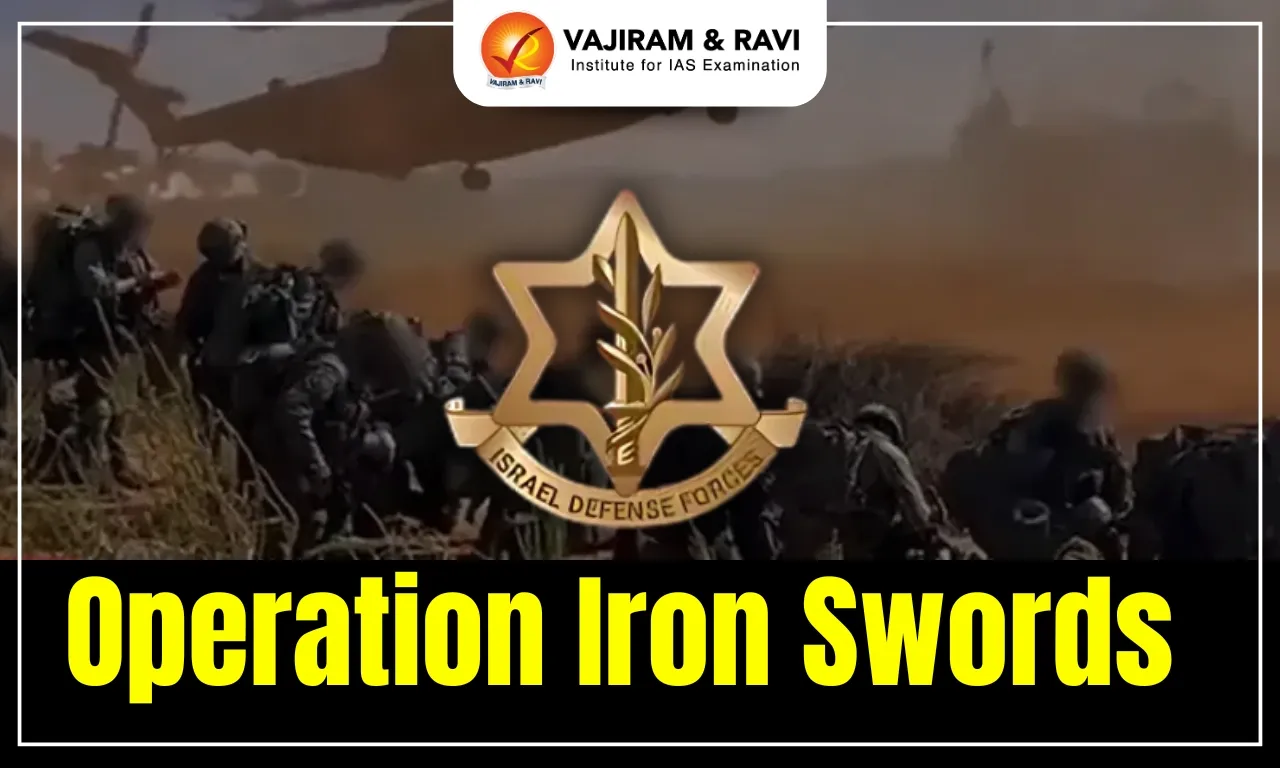Operation Iron Swords represents one of the most significant and intense military responses in the long-standing Israeli-Palestinian conflict. Launched in reaction to the October 7, 2023, Hamas attacks on Israel, this operation marked a turning point in the security dynamics of the region. The operation was launched in response to the sudden and large-scale attack by Hamas fighters and the heavy rocket fire on southern Israel. In this article, explore the objectives, execution, challenges, impact, and aftermath of Operation Iron Swords.
Operation Iron Swords Objectives
The primary objective of Operation Iron Swords was to ensure national security and restore a sense of safety among Israeli citizens. Several specific goals included:
- Israel aimed to dismantle Hamas's operational capabilities, including command centers, weapons depots, and tunnel networks.
- Around 250 Israeli and foreign civilians were taken hostage during the first Hamas attack. One of the main goals was to find and safely bring them back.
- The large-scale attacks on October 7 had weakened Israel’s image of strength. This operation aimed to rebuild that by showing its military power and readiness.
- By targeting launch sites, smuggling routes, and militant leaders, the operation aimed to prevent future cross-border attacks from Gaza.
- While the operation was military in nature, Israeli authorities maintained that a critical goal was to prevent further harm to civilians on both sides through precision targeting.
Also Read: S-400 Defence System
Operation Iron Swords Execution
The Operation Iron Swords Execution was multi-phased and involved an array of military strategies across land, air, and sea. Below is an overview of how the Israeli Defense Forces (IDF) implemented the operation:
- Following the Hamas attack, the IDF immediately launched extensive airstrikes on over 1,000 Hamas-related targets within the Gaza Strip. These included weapon manufacturing plants, rocket launchers, intelligence outposts, and leadership compounds.
- In one of the largest military mobilizations in Israeli history, nearly 295,000 reservists were called into service to bolster ground forces and support logistics.
- As air operations continued, a large-scale ground offensive was initiated. The Israeli military entered northern Gaza to clear strategic areas, dismantle Hamas's tunnel networks, and engage militants directly.
- The Israeli Navy played a key role by blocking the Gaza coastline to stop weapons from being smuggled in and to prevent attacks coming from the sea.
- Parallel to the physical battle, Israel’s cyber units and intelligence services coordinated efforts to disrupt Hamas communications, monitor movements, and prevent retaliatory strikes.
- Israel used targeted drone and missile strikes to go after important Hamas figures, including top leaders and local commanders.
Also Read: Vande Bharat Mission
Operation Iron Swords Challenges
Despite its military capabilities, Israel encountered numerous strategic and logistical challenges:
- Gaza is densely populated, which made it very hard to carry out strikes without risking civilian lives. Hamas often operated from within civilian spaces like homes and hospitals, making it harder to target them.
- Many hostages were held in underground tunnels or civilian buildings. This created a tough situation for the military — any attack had to be carefully planned to avoid harming those innocent people.
- As the operation continued, it attracted global attention. Many international organizations and governments criticized the scale of destruction and called on Israel to show more restraint.
- The airstrikes caused major disruptions to basic services in Gaza, such as power, water, and healthcare. This led to a growing humanitarian crisis and put Israel’s global image under pressure.
- Even while the operation was underway, Hamas and other groups kept firing rockets at Israeli cities, including Tel Aviv and Jerusalem. Israel had to stay on high alert and keep defending its people.
Operation Iron Swords Impact
The Operation Iron Swords had wide-reaching impacts that were both immediate and long-term in nature:
- The Israeli military claimed to have destroyed a significant portion of Hamas’s tunnel networks and command infrastructure, impairing its operational capacity.
- Thousands of Palestinians were killed or injured, and many more were displaced from their homes, leading to a humanitarian disaster in the Gaza Strip.
- The operation led to increased tensions with Hezbollah in Lebanon, unrest in the West Bank, and strained relations with neighboring countries like Egypt and Jordan.
- While countries like the United States expressed strong support for Israel’s right to defend itself, others including many in Europe and the Middle East called for immediate ceasefires and humanitarian aid.
- The war took a serious toll on the economies of both Israel and Gaza. Trade routes shut down, tourism collapsed, and key infrastructure suffered heavy damage leading to long-term economic challenges and the need for massive reconstruction efforts.
Also Read: Operation Sindoor
Operation Iron Swords Aftermath
The aftermath of Operation Iron Swords continues to evolve and raises complex questions for the future:
- Rebuilding infrastructure in Gaza is a massive challenge requiring international cooperation. The distribution of humanitarian aid remains difficult amid political tensions.
- Israeli leadership faced both domestic and international pressure. Debates within Israel scrutinized the intelligence failures leading up to October 7 and the broader handling of the operation.
- The conflict further diminished the prospects of a two-state solution. Trust between communities is at a historic low, and renewed negotiations seem unlikely in the immediate future.
- Countries in the region are reassessing their defense postures. Israel is likely to strengthen border defenses, while regional players may increase support for Palestinian governance reform.
- International agencies, including the United Nations and Red Crescent, are mobilizing to address the humanitarian crisis. However, their access and ability to operate depend on political agreements.
- Operation Iron Swords could mark a change in how Israel handles asymmetrical threats, placing more emphasis on cyberwarfare, drone technology, and intelligence-led operations.
Last updated on December, 2025
→ Check out the latest UPSC Syllabus 2026 here.
→ Join Vajiram & Ravi’s Interview Guidance Programme for expert help to crack your final UPSC stage.
→ UPSC Mains Result 2025 is now out.
→ UPSC Notification 2026 is scheduled to be released on January 14, 2026.
→ UPSC Calendar 2026 is released on 15th May, 2025.
→ The UPSC Vacancy 2025 were released 1129, out of which 979 were for UPSC CSE and remaining 150 are for UPSC IFoS.
→ UPSC Prelims 2026 will be conducted on 24th May, 2026 & UPSC Mains 2026 will be conducted on 21st August 2026.
→ The UPSC Selection Process is of 3 stages-Prelims, Mains and Interview.
→ UPSC Result 2024 is released with latest UPSC Marksheet 2024. Check Now!
→ UPSC Prelims Result 2025 is out now for the CSE held on 25 May 2025.
→ UPSC Toppers List 2024 is released now. Shakti Dubey is UPSC AIR 1 2024 Topper.
→ UPSC Prelims Question Paper 2025 and Unofficial Prelims Answer Key 2025 are available now.
→ UPSC Mains Question Paper 2025 is out for Essay, GS 1, 2, 3 & GS 4.
→ UPSC Mains Indian Language Question Paper 2025 is now out.
→ UPSC Mains Optional Question Paper 2025 is now out.
→ Also check Best IAS Coaching in Delhi
Operation Iron Swords FAQs
Q1. What is the meaning of operation iron swords?+
Q2. Which country has Operation Iron Swords?+
Q3. Why is Israel attacking Gaza?+
Q4. How many Israeli troops have died in Gaza?+
Q5. What is the history of iron swords?+

















